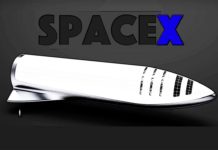We’re all used to speaking about “our Earth”. Is it time now to speak of “our Pluto” and “our Charon”? The scientists at the New Horizons team think so, and are inviting public participation in naming physical features on Pluto and Charon. As the New Horizons probe nears Pluto and Charon to begin its task of mapping their surface features and composition, project scientists are gearing up to choose names for these.
Charon is Pluto’s largest moon and the two are some times considered a double planet system. The names for their yet-to-be-discovered physical features have been chosen from ten themes that fit three broad categories: the history of exploration, the literature of exploration, and the mythology of the underworld. But nominations are still open for new names, and you can either propose new names or vote on existing choices. Nominations have been rolling in from nearly every country on earth.
Starting in July, New Horizons will offer the first glimpse of the mountains, craters, valleys and other features of Pluto’s surface. For the first time ever, it is possible for this information to be shared globally. As the enduring fascination with Pluto, the lord of the underworld connected to death and riches, finds a new focus, scientists hope to use this opportunity to inspire a new generation of exploration.
New Horizons blog Mark Showalter writes: “Exploration is in our DNA….Exploration is in our mythology….Exploration is in our history…. The outcome might be profound or tragic. We never know beforehand. We go anyway….Exploration is in our nature still….Today, our maps have a third dimension, up.”
The names, nominations and votes will be examined by the New Horizons team and submitted to the IAU, which will have the final say.
Beyond Pluto, project scientists are trying to identify a destination in the Kuiper Belt, and have turned to that old faithful, the Hubble Space Telescope, to find a suitable object for the space probe’s next stop. Two possible destinations for the next flyby were revealed last week at the Lunar and Planetary Science Conference in Houston. Now named 2014 MT70 and 2014 MT69, they are estimated to be 47 and 37 miles across respectively. The choice depends on the amount of fuel needed to change the space probe’s path, and on continued funding for the New Horizons project.

















